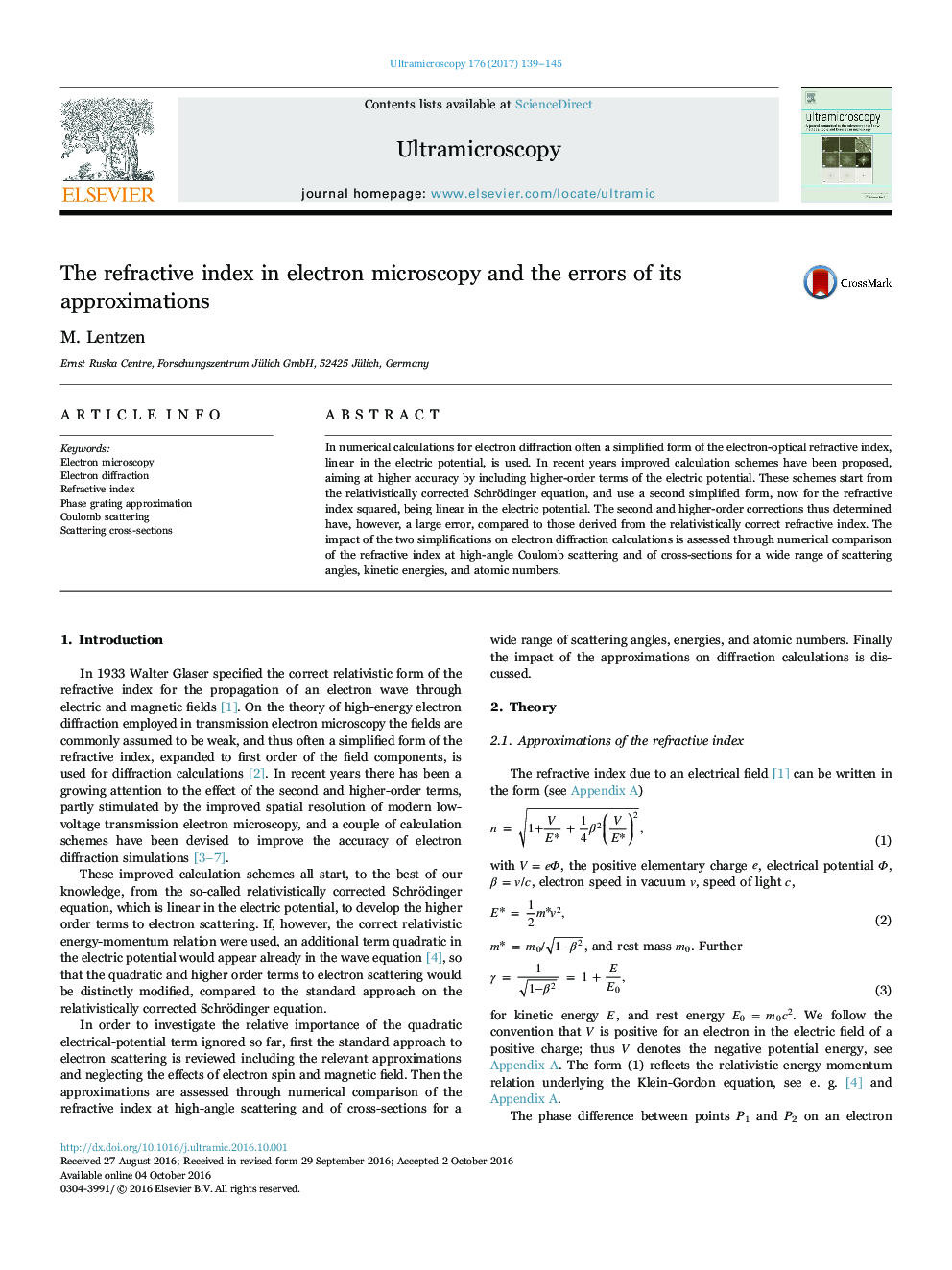| Article ID | Journal | Published Year | Pages | File Type |
|---|---|---|---|---|
| 5466891 | Ultramicroscopy | 2017 | 7 Pages |
Abstract
In numerical calculations for electron diffraction often a simplified form of the electron-optical refractive index, linear in the electric potential, is used. In recent years improved calculation schemes have been proposed, aiming at higher accuracy by including higher-order terms of the electric potential. These schemes start from the relativistically corrected Schrödinger equation, and use a second simplified form, now for the refractive index squared, being linear in the electric potential. The second and higher-order corrections thus determined have, however, a large error, compared to those derived from the relativistically correct refractive index. The impact of the two simplifications on electron diffraction calculations is assessed through numerical comparison of the refractive index at high-angle Coulomb scattering and of cross-sections for a wide range of scattering angles, kinetic energies, and atomic numbers.
Keywords
Related Topics
Physical Sciences and Engineering
Materials Science
Nanotechnology
Authors
M. Lentzen,
